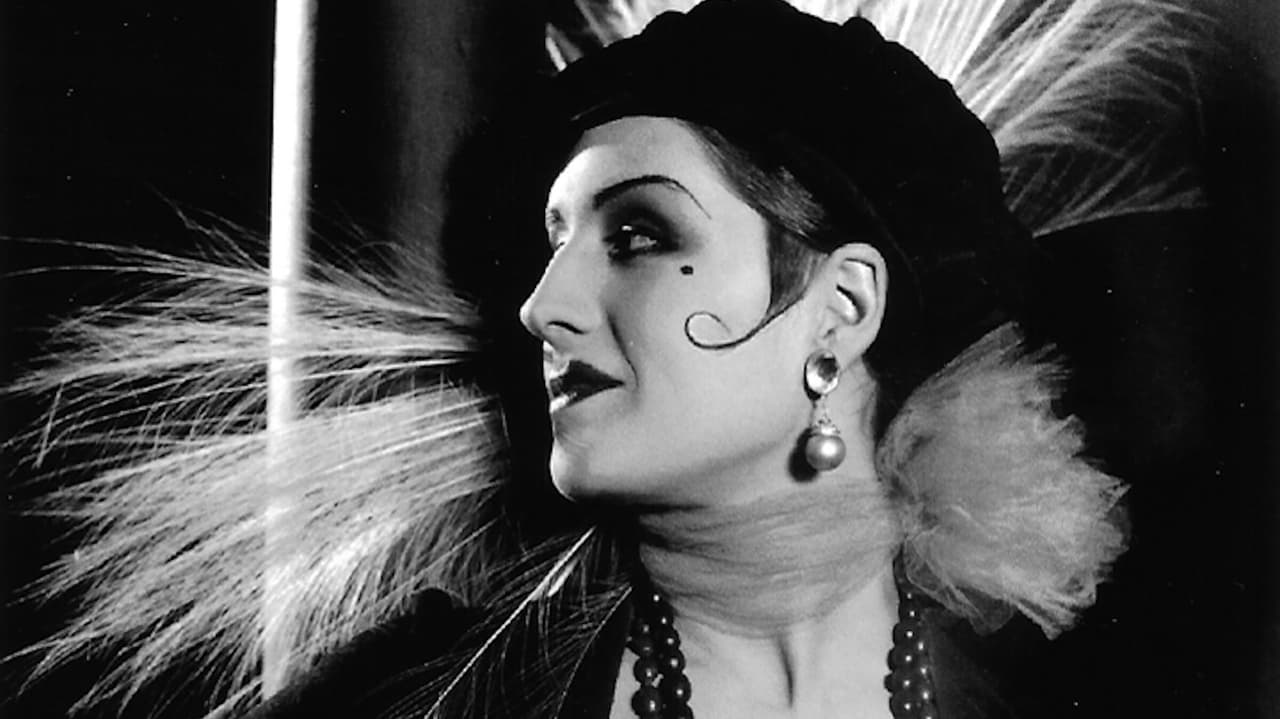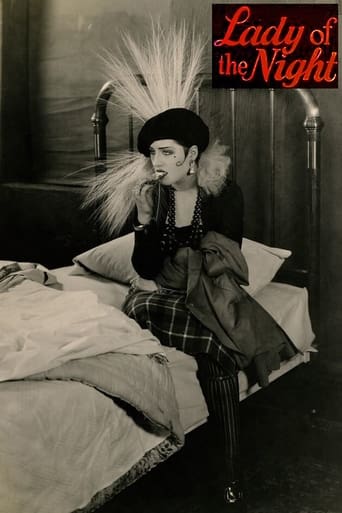

Before he is taken away in handcuffs, a father says farewell to his newborn baby girl. The unfortunate man is sentenced to 20 years in the penitentiary, by a judge who also has a newborn baby girl. The convict's baby grows up in poverty; the judge's daughter grows up wealthy. Eighteen years later, pretty débutante Norma Shearer (as Florence Banning) graduates from an exclusive finishing school. In a dual role, attractive delinquent Norma Shearer (as Molly Helmer) graduates from a girls' reform school. The central role Ms. Shearer plays in "Lady of the Night" is the latter one - "Molly" the lower class young woman..."Molly" dates underworld pipsqueak George K. Arthur (as "Chunky" Dunn). She wears a feathered hat that looks like it would strike you blind if Shearer turned her head suddenly. She receives some unwanted attention from a sleazy man. A very handsome young inventor, Malcolm McGregor (as David "Dave" Page), intervenes and saves Shearer. She is smitten. He is interested as well, but Mr. McGregor later meets Shearer's "Florence" - and they begin to date. This makes "Molly" sad. She will have to either fight for Mr. McGregor or let him find happiness with "Florence" the more socially suitable mate...In 2006, "Lady of the Night" was been beautifully restored for broadcast on Turner Classic Movies (TCM). This version runs 61 minutes, which suggests at least one reel's worth of running time is missing. Still, the film plays beautifully. It's possible that something implying prostitution was cut as the title "Lady of the Night" suggests this - but there is no explicit evidence in the feature. Jon Mirsalis' new musical score is marvelous, accompanying the visuals without being obvious. Shearer and director Monta Bell work wonderfully together. One of the most poetic scenes is Mr. Arthur's attempt to touch a ray of light, arriving via a hole in Shearer's window shade...Watch for a very brief glimpse of Joan Crawford's profile in the scene where Shearer hugs Shearer. Soon to join Shearer as an MGM super-star, Ms. Crawford served as body double, due to the star playing two roles. There aren't a lot of scenes involving Shearer and Crawford. Due to the feature film's short running time, it's possible some missing footage involved the two actresses. It's also possible some unknown connection between "Molly" and "Florence" was intended; in the present version, there is no connection made and their resemblance is not noted. Nice to see Kellogg's frosted corn flakes, too. If you aren't sure about "silent" feature films, this is an appealing taste.******** Lady of the Night (2/23/25) Monta Bell ~ Norma Shearer, Malcolm McGregor, George K. Arthur, Joan Crawford
... View MoreNorma Shearer began her career playing bit parts in 1920. Four years later she reached stardom in a series of hit films like "He Who Gets Slapped"(MGM,1924) and "The Snob"(MGM,1924) but it is this beautifully done film released in early 1925 that made her a top MGM star. She plays a good girl and a bad girl and is just marvelous in both roles. The film is not long on story but Monta Bell's excellent direction and Norma's superb acting make this silent film so much more. The forgotten George K. Arthur lends fine support but it is Norma at her silent era peak that makes this a must see. SHe is just great in the hooker role-a forerunner of the racy roles she would excel in during the early talkie period.
... View MoreThe strength of this one is the way the camera tells the story -- beautifully. The film justifies the artistry often claimed for silent films. The weakness of the film is the story itself. It starts out like "A Place in the Sun" (George Stevens' great film of 1951), with an ambitious young man loved by a lower class woman and an aristocrat. Dreiser's 'An American Tragedy,'on which the Stevens film was based was published in the year of 'Woman of the Night' (1925). But the film becomes conventional, when Molly decides that Chunky will at least be a lot of laughs. The fact that the two women do look alike, in spite of the makeup and garish costumes that Norma's Molly wears, is not exploited. The "double story" a la 'Dorian Gray,' 'Jeykll and Hyde,' Poe's 'William Wilson,' Dostoyevski's 'The Double,' James' 'Jolly Corner,' and Conrad's 'The Duel' is not told, so there's no point in having Shearer play both women. In fact, Joan Crawford, who must have just changed her name from Lucille LeSueur, plays Molly when the two women are on screen. I wonder how Crawford felt later, when Shearer got all the parts that Thalberg bought for her during the early days of talkies. Crawford told us when she commented on Shearer and Howard in the 1936 'Romeo and Juliet': "I couldn't wait for those two old turkeys to die -- could you?"
... View MoreThis is a pretty straightforward silent romantic melodrama, and it's unclear why Norma Shearer was cast in a dual role when the two characters are not related and there's nothing in the plot that requires them to look at all alike, but it's made interesting by the excellent performance Shearer turns in as Molly. Florence is a typical goody-good Shearer characterization but Molly is a much more fascinating character, not really a "bad" girl but a young woman who's living by her wits, close enough to the underworld to be involved with a shady character like "Chunky" Dunn but decent enough to steer the hero away from criminal temptations. Beautifully made up and costumed (those feathers in her hat seem to have a life of their own!), Shearer as Molly turns in a sensitive performance, alive to the pathos of the character: it's a real pity she didn't make more films playing roles like this instead of the impossibly good heroines (like Florence in this film) for which she became known. (Incidentally the print I saw on Turner Classic Movies ran only 64 minutes and did not contain a two-strip Technicolor sequence a real pity since I like the look of two-strip and am always glad when I can see a well-preserved example of it.)
... View More